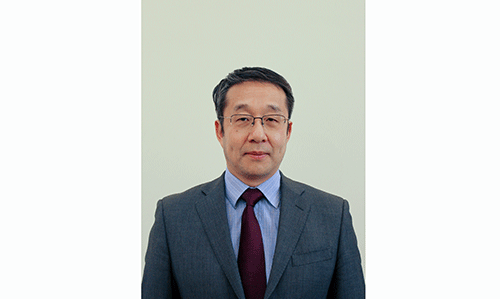Dr Yang Ganfu
As a complete pattern for living culture is elaborate, abstract and pervasive and countless aspects of culture, explicit and implicit, help to determine and guide communication behaviour acquired and transmitted by symbols, constituting the distinctive achievements of human groups.
Different human groups enjoy different cultural dimensions. Despite an element of stereotyping in them, the following dimensions of individualism versus collectivism, high-context communication versus low-context communication, high-power distance versus low-power distance and attitudes to time are frequently used and applied to conflict processes to generalise and identify cultural differences. For instance, researchers of intercultural communication label Chinese as collectivists and the Westerners, individualists. This explains why Chinese and Westerners have different ways of communication and behaviours and apply different approaches to conflict. Ting-Toomey (1999) analyses the different modes individualists and collectivists prefer to use in handling conflict. Individualists’ mode is a step-by-step, linear one: dissect the problem, generate criteria, brainstorm some solutions and select the best one in line with these criteria. By contrast, collectivists use a spiral mode, taking all contextual conditions into consideration, looking at the “big picture”, and then deciding on how to solve the issue.
The two different approaches to conflict are in sharp contrast, which is an indication that it is not surprising if a collectivist interlocutor runs into problematic encounters with an individualist interlocutor and vice versa.
Furthermore, individualist cultures and collectivist cultures adopt different conflict styles. Investigating the relationship between ‘face’ and conflict styles, Rahim in Ting-Toomey and Oetzel (2003) introduces five styles of handling conflict: integrating, compromising, dominating, obliging, and avoiding. Individualist westerners cause self-face concerns, which result in dominating and competing conflict styles. By contrast, collectivist Chinese lead to other- and mutual-face concerns, which result in avoiding, obliging, and integrating conflict styles.
Chinese would use big picture mode in handling conflicts. They would apply avoiding style to elude the conflict situation altogether to avoid direct conflict with the other party to save face for both parties. The integrating style would also be adopted by Chinese for conflict solution to produce a harmonious situation for both parties. For a midpoint agreement in conflict, the compromising style is proposed in Chinese communication. In a nut, Chinese way of handling conflict is to achieve harmony and common consensus among parties concerned.
Individualist Americans for instance would prefer dominating conflict style to save their own interests. They often express their opinions and ideas assertively and aggressively, considering no face for others. In political and economic domains, sanctions and wars would be their first priorities to punish others in order to serve their own interests, leading to suffering, casualties and death to millions of civilians from the countries which did not follow American politicians’ logic or failed to agree with them, worsening already conflicting situations. A number of wars and sanctions led by America against other nations are evidence-based examples of this American individualist culture.
The discourse of China-USA tensions showcases differing approaches the two cultures apply. American politicians accused China with aggressive but evidence-devoid rhetoric, regarding themselves as a world leader and police. They launched a trade war against China, ending up with more suffering by American people. They accused China of suppressing human rights protests in Hong Kong, blatantly defending those rioters who damaged and burnt public infrastructures, injured police with weapons and causing traffic paralysis in HK while they sued and put the American protesters of White House to jails. Irrationally, Biden administration called for political boycotts of 2022 Beijing Olympic Winter Games. Even more confrontational behaviour by American politicians is witnessed from the latest USA Congress proposal of $500 million for negative news coverage of China, a bill to direct fund to the US Agency for Global Media, as well as local outlets and programs to train foreign journalists and oversea audiences that is critical of China. Americans’ behaviours convey their individualist interests of American Priorities.
In its thousands of years of overseas visits to and interactions with other parts of the world, China has never occupied any other nations by weapons nor colonized any other countries. Peace-loving and shared prosperity with other cultures are ingrained in Chinese mindsets. Chinese BRI tells a true fact that Chinese are working for the benefits of international community. When Chinese were compelled to defend themselves against American trade war or when Chinese were forced to fight a tit-for-tat of Americans defamation of Chinese, American politicians were quick to accuse Chinese of being aggressive, confrontational and hostile, labelling China as a threat to international rules.
Obviously, Chinese and Americans have a different way of interacting. But cultures are learned. Individualist Americans can learn from the collectivist Chinese how to interact with others to create harmony, peace and shared prosperity.


